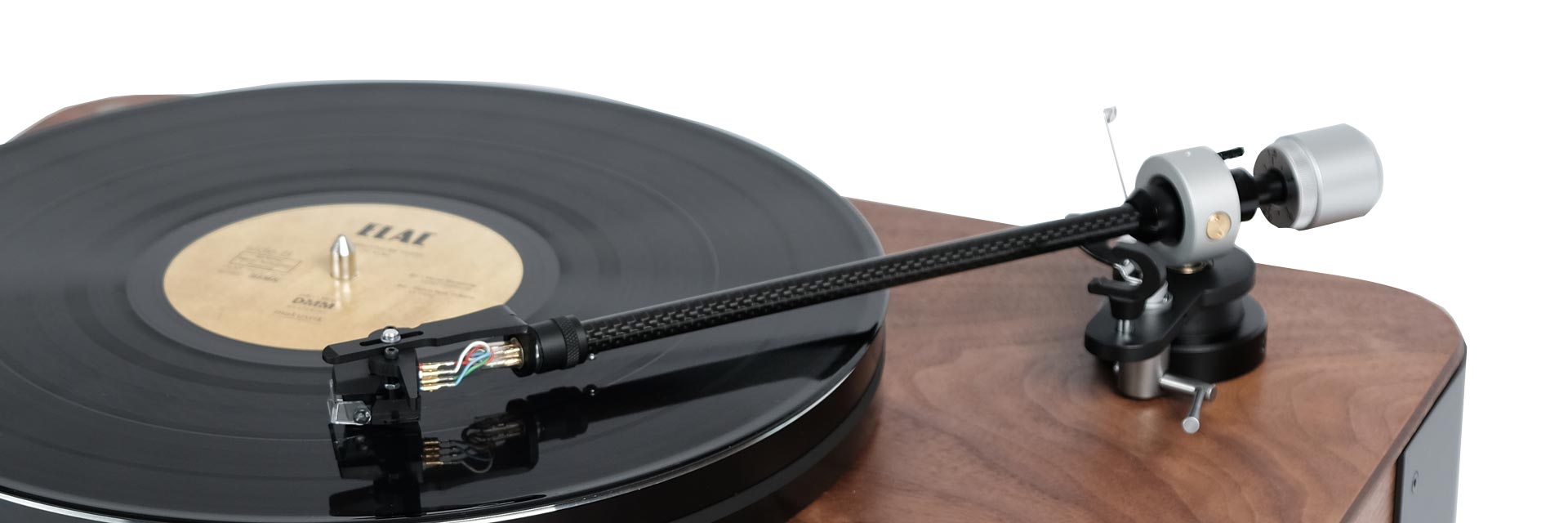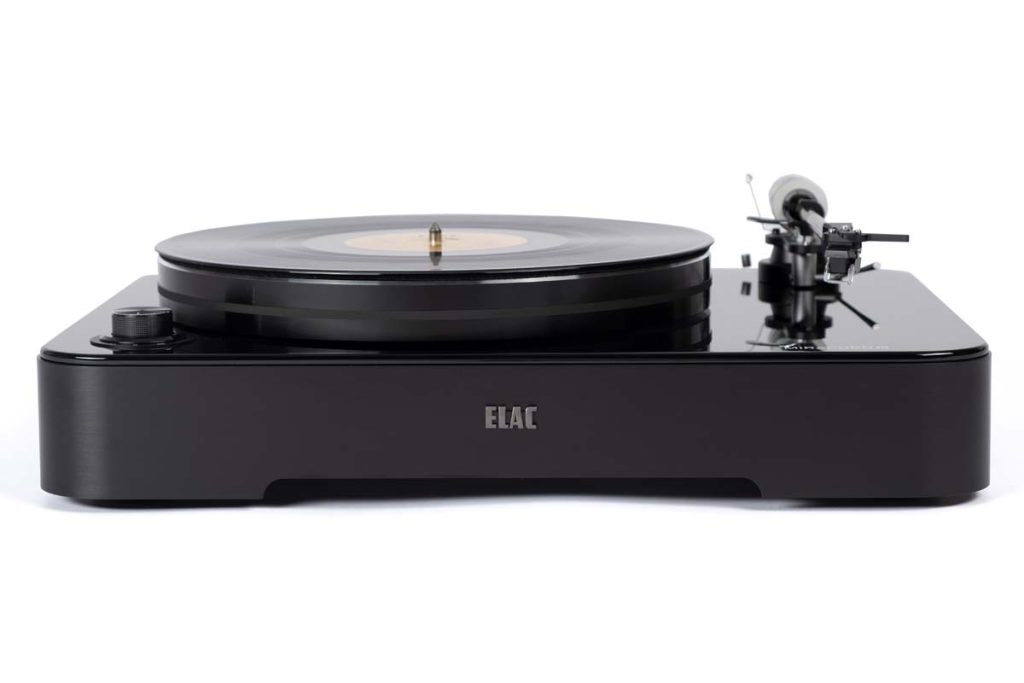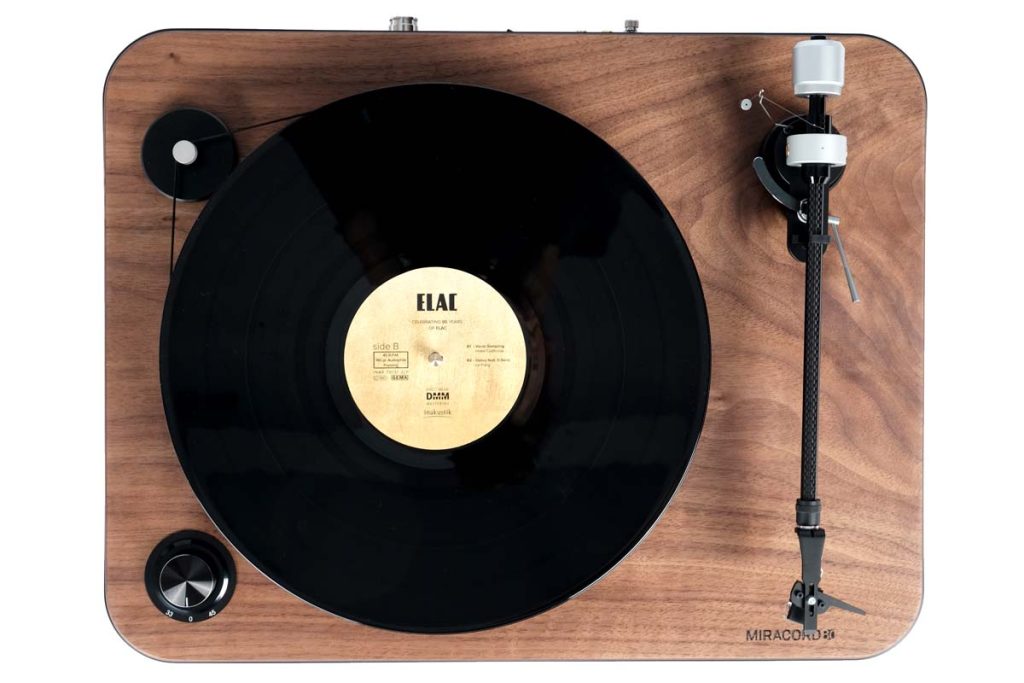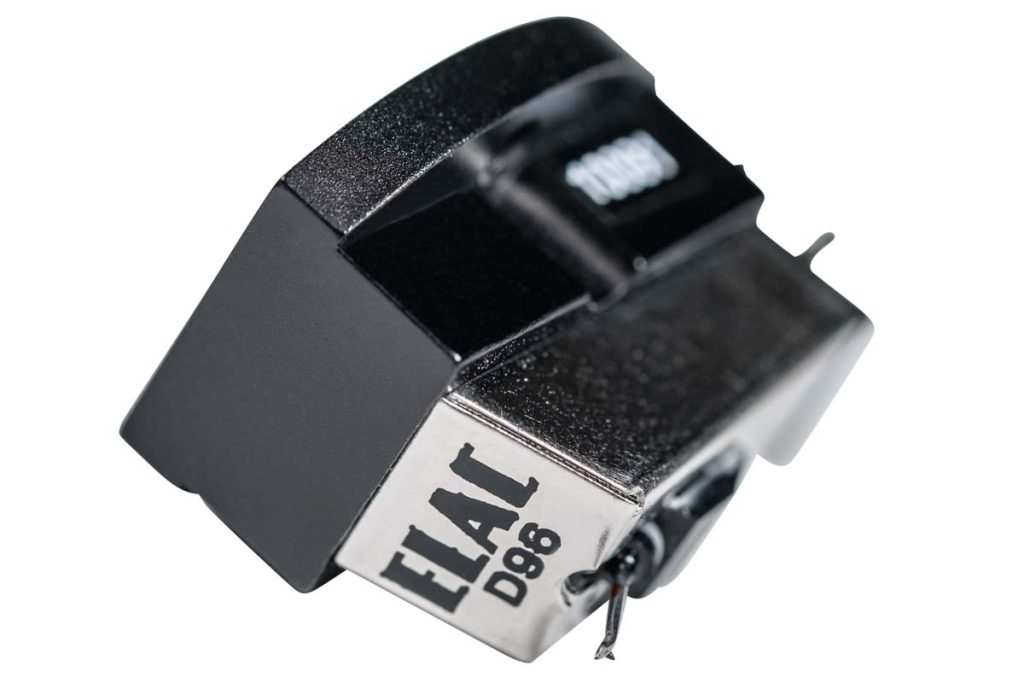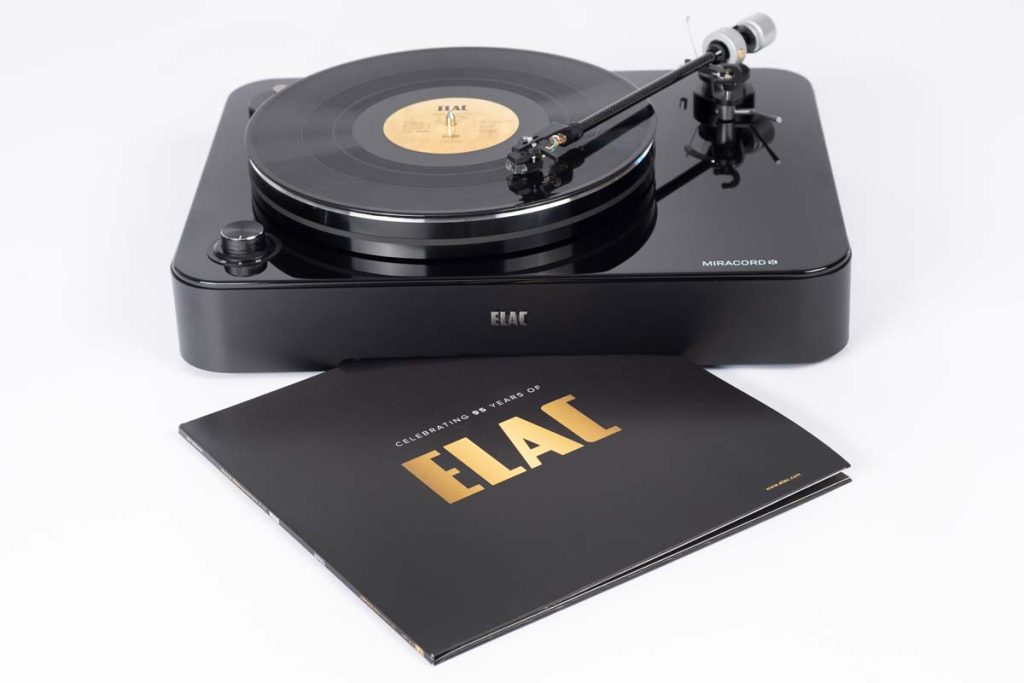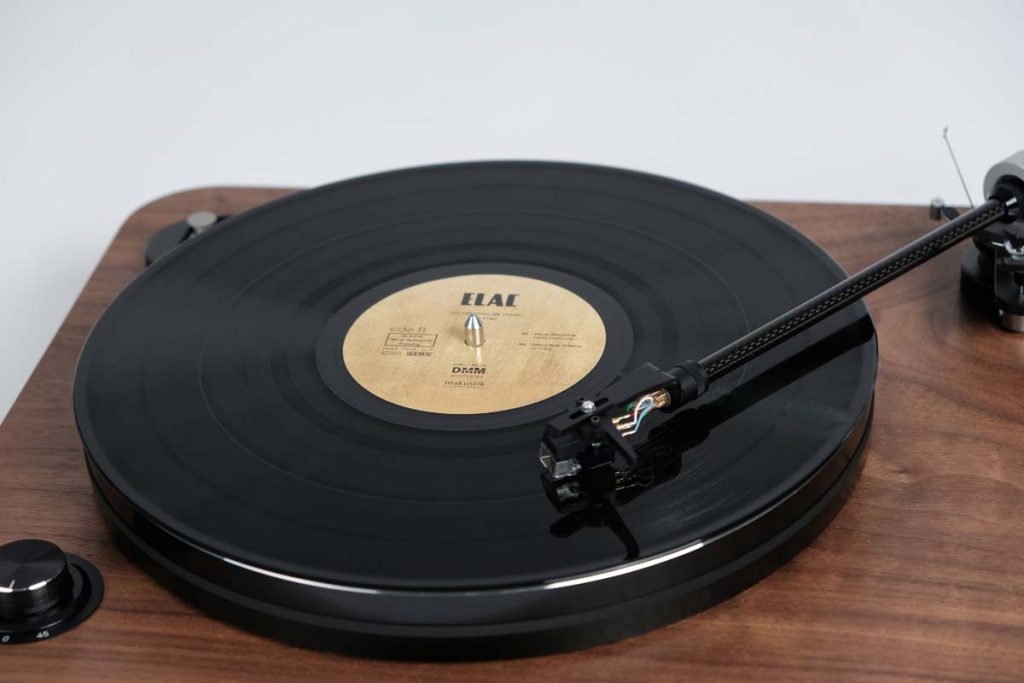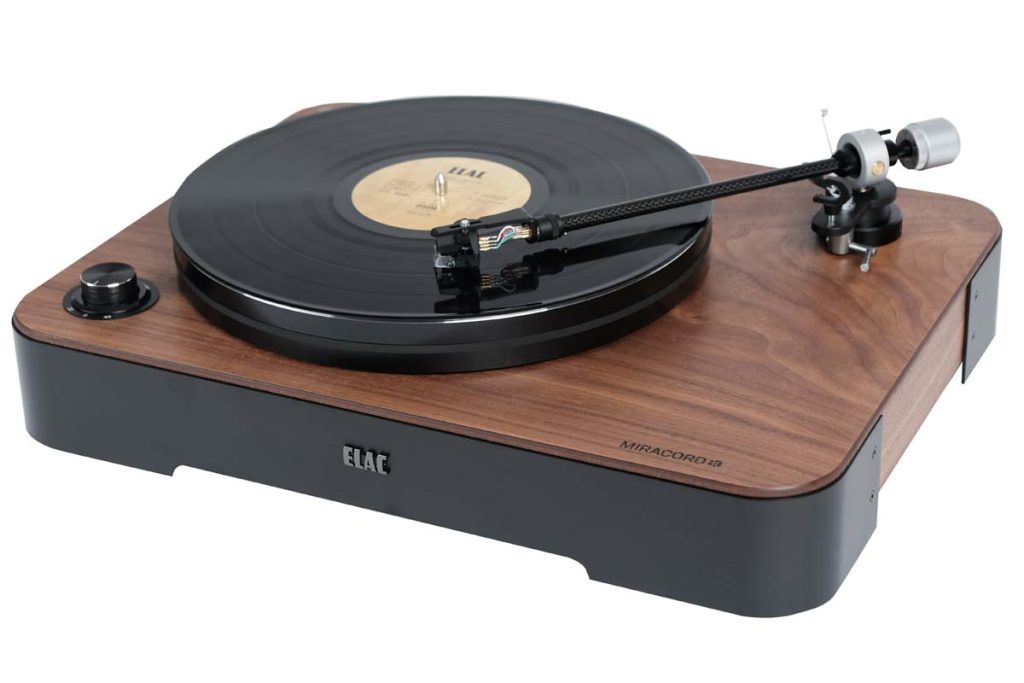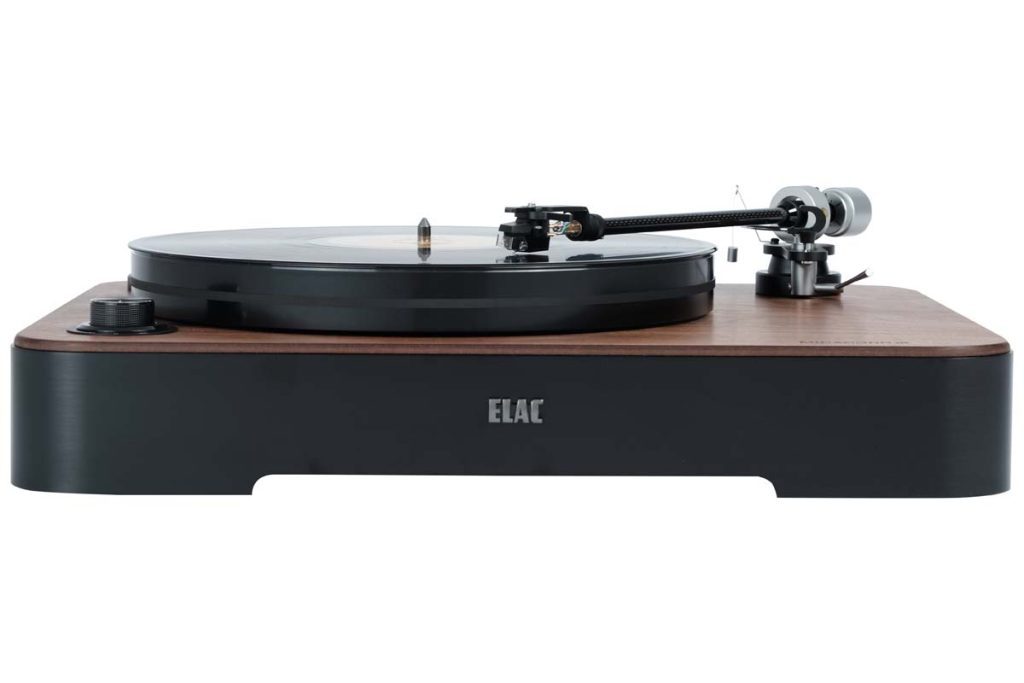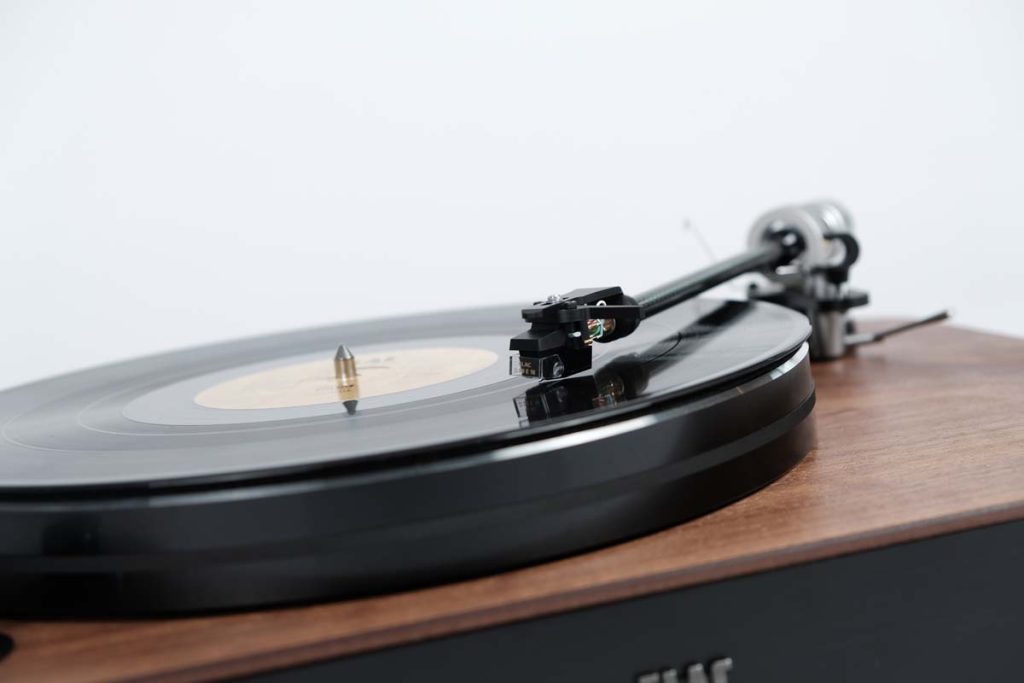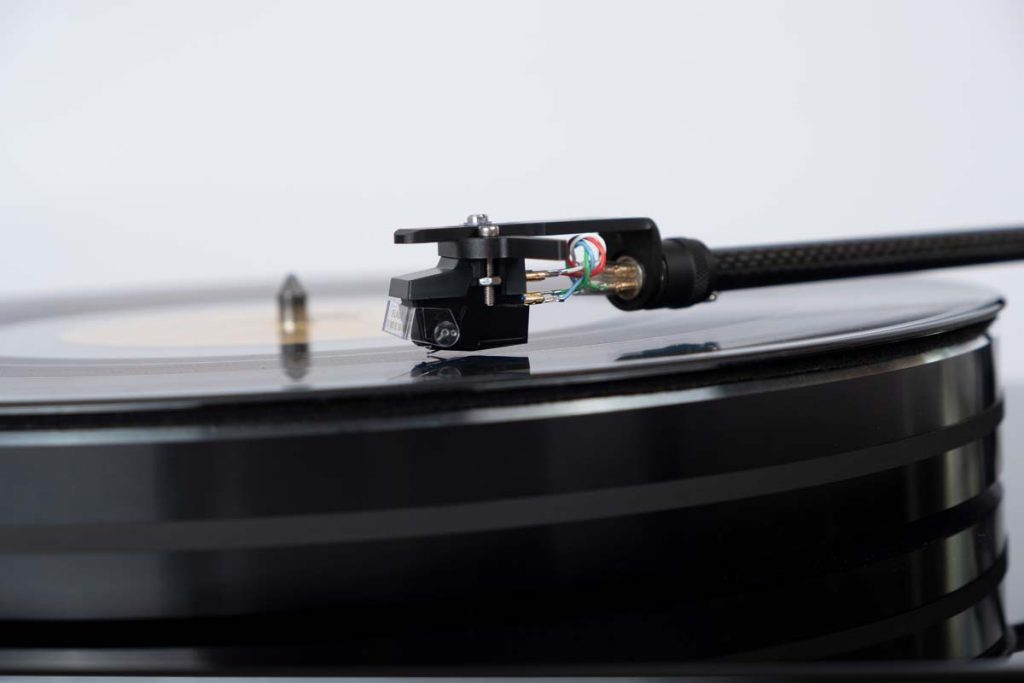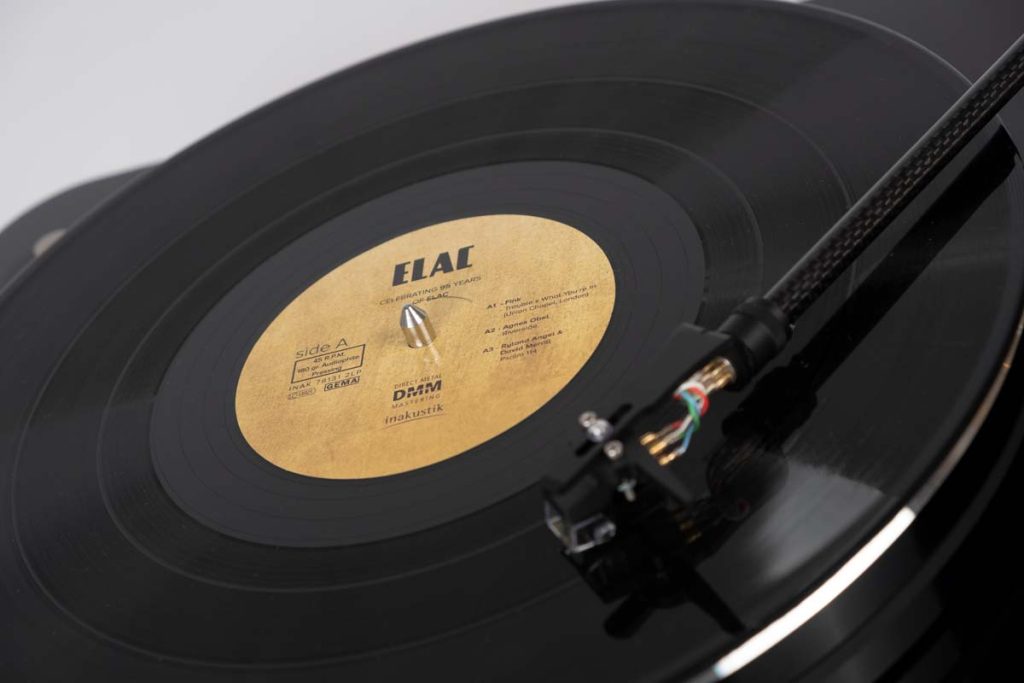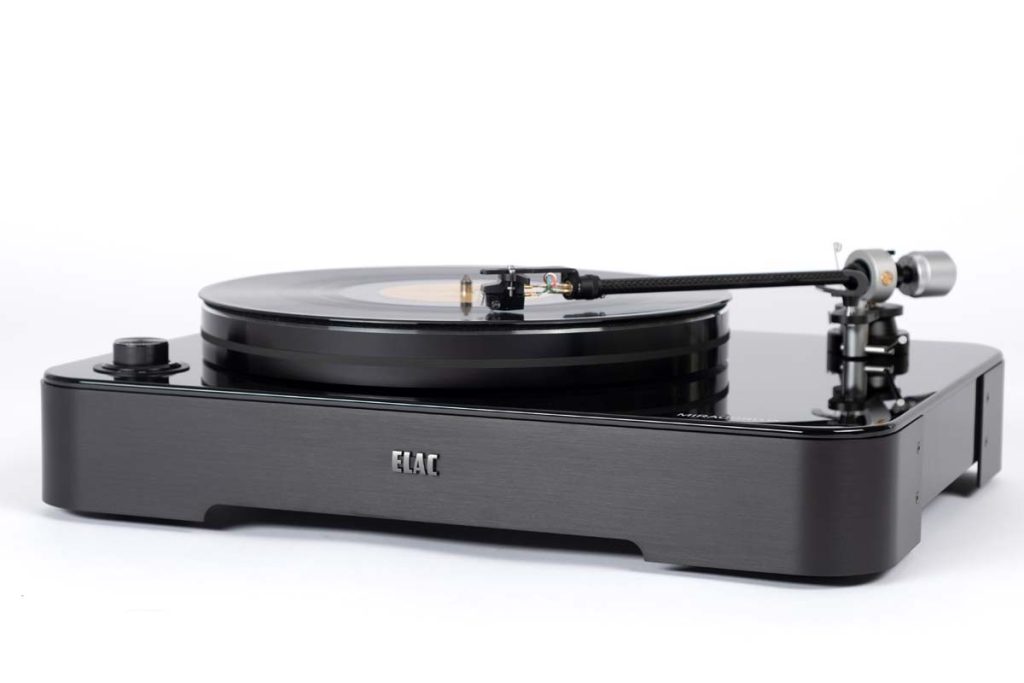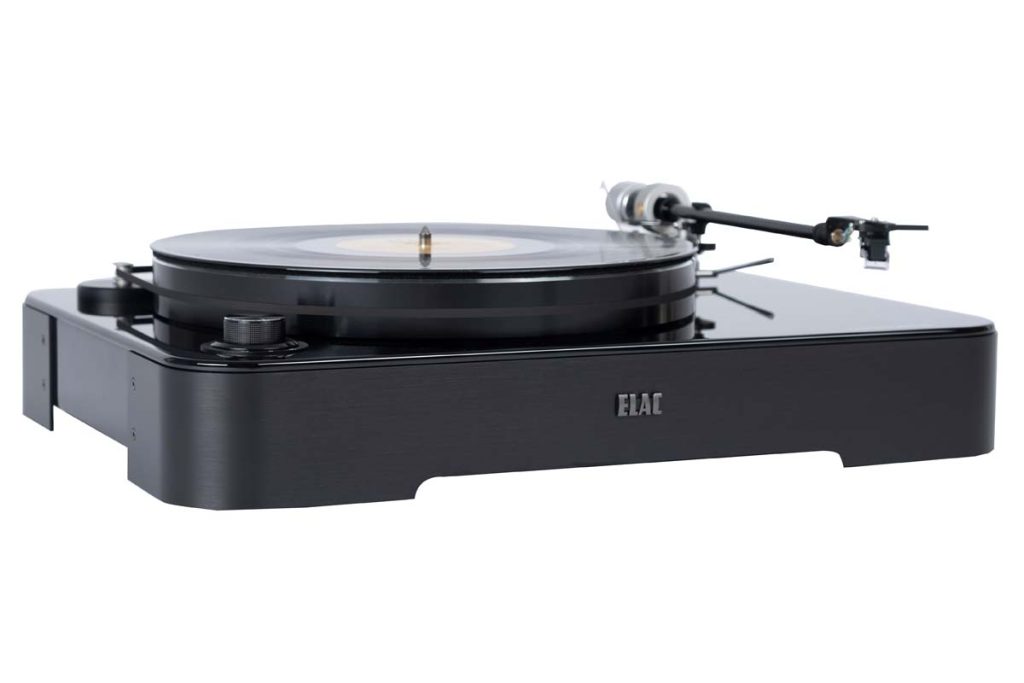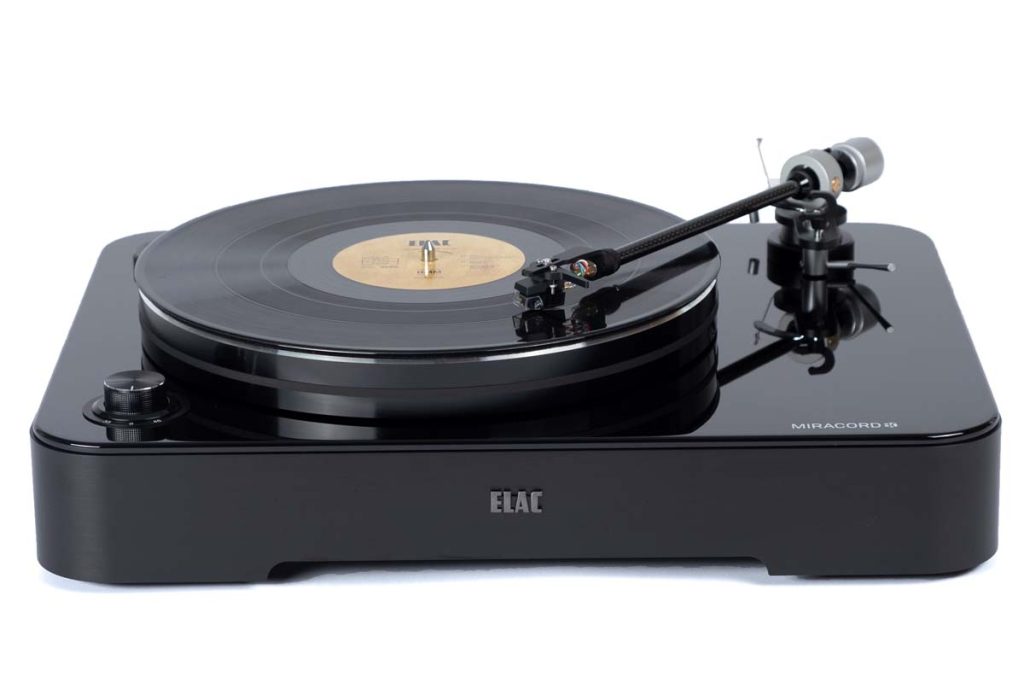The new Miracord 80 has become a little slimmer. Although its just a mere two centimeters, trimming down the height a bit while retaining the same footprint as its predecessor, the Miracord 90, made it look much more elegant. Or maybe its due to the noble black dress of high-gloss lacquer, chosen to match the aluminum of the platter? Or perhaps the technical look of the filigree carbon arm is the reason?
Only a second glance reveals the design innovations that distinguish the two generations: Gone is the bulky knob for speed adjustment, which only former techno disciples might miss. Since this very limited target group remains loyal to its twelveteener, the developers removed the “pitch control” – this measure definitely benefits the elegant appearance. The motor, which was doubly decoupled by means of center spiders, also had to move. Instead of occupying the entire front left-hand corner, as was the case with the 90, the engine was moved to the background on the left. American power gave way to Taiwanese precision and gentleness in the 80, and with it the previously so dominant engine mount with its characteristic yellow centering spiders became obsolete. Instead of being firmly centered, the drive now rests on small rubber dampers, which are just as effective at keeping vibrations at bay. The tightly fitting flat belt remains, which initially left some abrasion around the pulley in our test sample. However, this disappeared after a few hours of running in. Then the belt tension was right, and the Elac Miracord 80 made its rounds cleanly and stoically. To compensate for any fluctuations in speed, a microprocessor with optical encoder monitors the rotation speed and adjusts it inaudibly if necessary. Together with the platter mass of five and a half kilograms and the almost frictionless platter bearing, this results in a system with perfect synchronization.
The Miracord 80 thus offers all the qualities of its predecessor, which I praised highly at the time. The only downer for me is the included power supply, which supplies the necessary current to the jack socket of the Miracord and whose cable can be locked to the turntable. The cable length of just under one hundred and twenty centimeters, however, left me with somewhat little room to maneuver when setting it up: if you operate your turntable on a wall mount, you’ll have to resort to extensions that are suboptimal in terms of sound quality. Or better yet, the matching in-house preamplifier Alchemy. This not only converts the sound signals to a suitable level, but also provides the supply voltage for the Miracord. Instead of the usual jack socket of the power supply, the Alchemy is connected via a socket of the German specialist Lumberg. Unfortunately, the press models of the preamplifier were fully booked until October, and so it could unfortunately no longer be considered for our current test.
Those who like to be informed about the operating status via blinking lights will be disappointed: There is no such thing on the Elac Miracord 80. The lightshow would not be necessary anyway, since the Elac player reaches the set speed in no time and turns its rounds unimpressed. The speed is selected via a handy rotary switch, which is now mounted on the front left of the frame. On the predecessor, the pitch control wheel was still below the tonearm, which put the pickup in latent danger depending on the user’s caution. But the Kieler learn constantly to it, therefore it does not surprise that the nineties was the more bulky equipment, the eighties against it substantially more clearly conceived seems. One has successfully removed everything that was not absolutely necessary to be able to listen to formidable music.
Absolutely necessary for this is and remains the tonearm, which was completely redesigned for the eighties. A lightweight carbon tube now accommodates the headshell with the help of a bayonet catch, which pleases owners of multiple systems and authors alike. The arm is designed to allow the owner maximum flexibility in the selection of the preferred cartridge. The only criterion here is the overall mass, other parameters such as needle position (azimuth) or height (vertical track angle) can be easily adjusted to the desired pickup by loosening and adjusting the respective screws. A look at the manual is immensely helpful at this point, since the small screws of the VTA adjustment, for example, are not immediately recognizable. The compensation of the skating force is done via a small counterweight, which is classically guided on a small gallows. For a “large series manufacturer” like Elac, I find the tonearm very filigree and elaborately manufactured, it makes more of an impression of a small analog convincer than a volume model from series production.
If you like, you can protect your Miracord against dust and dust bunnies with a separately available hood. Or you can directly put on a record as soon as the settings are done. Why I pull an ancient techno board by Adam Beyer out of the shelf, of all things, cannot be clearly explained. But the Miracord distills a clearly drawn, dust-dry bassline from the heavily used vinyl, which is in no way inferior to the pressure of its predecessor. But pressure isn’t everything in life, and techno is also in the last twitches of its existence, so on with music. Serious music. On the platter, Fritz Wunderlich still spins silently and silently, but the moment the needle touches the groove, it literally explodes between the Heco BellaDonna speakers. Despite the homeopathic price, the in-house system, which Elac has manufactured by Clearaudio, generates a dynamic that does not leave a dry eye. With finely tuned MC pickups, this number occasionally gets a bit tiring. The Heldentenor from Kusel needs a stable foundation to articulate his organ appropriately. Thanks to the bayonet mount and a second headshell, I can wonderfully experiment with changing pickups. Whereas the Elac D96, available in a package with the Miracord at a manageable extra charge of 300 Euros, is a bit milder and less authoritarian at the frequency ends and focuses on bright colors and harmonic moods, the Eighty gains even more in detail and attack with even more noble pickups.
The Elac manages the feat of fanning out large orchestras with a fantastic and in this price range rarely heard imaging in the width. Messrs. Di Meola and De Lucia move a good distance apart as they celebrate their night in San Francisco, while John Mc Laughlin as usual holds his ground stably in the middle. The Miracord plays so lightly and buoyantly that the record is allowed to go for another spin right away. It seems to me that the Elac has a real penchant for live recordings, has a superb sense of timing, and tends to focus on emotionally charged midrange rather than overblown gloss and bling. There may be more extroverted drives than the Elac Miracord 80, but few succeed in reproducing music of any stripe so organically. Legends live longer. May the Miracord remain forever.
Accompanying Equipment
Turntable: Acoustic Solid Vintage | Tonearm: Acoustic Solid WTB 213 | Cartridges: Clearaudio Charisma V2, Ortofon Quintet Red | Phono preamp: Acoustic Solid Phono preamplifier | CD-Player: Sony CDP-XA 777ES Swoboda | D/A converter: Audiolab M-DAC Mini | Integrated amplifiers: Einstein The Tune, Magnat MA 900, NAD C 302 | Power amplifier: Lehmann Black Cube Stamp | Loudspeakers: Audio Physic Seemon, Sonoro Grand Orchestra | Cables: Guerilla Audio power cords, interconnects and loudspeaker cables | Accessories: Steinmusic, Simply Analog
Turntable
Elac Miracord 80
Concept: belt driven non-suspended turntable | Drive: servo controlled synchronous motor | Material: MDF plinth, aluminum cladding | Platter: 30 mm aluminum | RPM: 33 or 45 | Special features: compatible with Elac Alchemy Phonopre PPA-2, optional dust cover (200 €) | Tonearm: 10″ carbon arm with cardanic bearing and aluminum headshell, effektive mass: 11 g | Finishes: black, walnut oiled | Dimensions (W/H/D): 47/15/36 cm | Weight: 14 kg | Warranty period: 2 years | Price: from 2200 € (w/o cartridge), around 2500 € (with Elac D96)
Cartridge
Elac D96
Concept: Moving Magnet (MM) | Stylus: elliptical | Tracking force: 2,2 g | Output voltage: 3,3 mV | Frequency response: 20 Hz – 20 kHz | Price: around 300 €
ELAC Electroacoustic GmbH
Fraunhoferstraße 16
24118 Kiel
Phone: +49 431 647740

